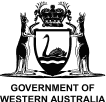Westport has partnered with the Western Australian Marine Science Institution (WAMSI) to deliver the $13.5 million WAMSI-Westport Marine Science Program. This 3-year program is developing the latest data, information and modelling on the complex environmental systems and community values associated with Cockburn Sound.
Project 1.3: Using conceptual, qualitative and quantitative ecosystem models to characterise the trophic structure, ecosystem attributes and functioning of Cockburn Sound.
Research theme: Ecological Modelling
Researchers: H Lozano-Montes, N Loneragan, S Fourie, B Wise
Publication date: December 2023
Why ecological modelling?
Cockburn Sound is highly valuable to WA for what it provides in industrial, recreational and environmental uses.
As well as its diverse uses, the Sound has a history of major industrial development and nutrient pollution, although this has substantially improved over the past two decades.
To date, however, there hasn’t been a clear view of how the marine ecosystem within Cockburn Sound and its linkages work together.
The study investigated how biological communities within Cockburn Sound are integrated and organised. This includes the food webs, how water and other materials flow through the Sound, and the impacts these activities have on the broader ecosystem.
The study then developed a series of ecosystem models that provide a baseline understanding of key ecosystem processes, drivers, and pressures within Cockburn Sound.
What we did:
- 16 conceptual models of Cockburn Sound were developed. 9 of these models describe key pressures and threats for species of conservation interest, 4 describe the role of seagrass in ecosystem services and 3 describe the lifecycle of key fish species.
- These models were then used as the basis for developing qualitative models that describe the relationships between species, the environment and influencing factors such as climate change or infrastructure development.
- The models draw on the current knowledge of 5 key species in Cockburn Sound, including little penguins, seagrass, pink snapper, scaly mackerel, and blue swimmer crabs.
- The conceptual and qualitative models, which synthesise knowledge of key species, processes and pressures in the region, were used to inform the development of the quantitative Ecopath model.
The outcomes:
- The study provided current information on the trophic structure (food webs) and the broader function of the marine ecosystem in Cockburn Sound.
- The quantitative Ecopath model provided a framework for identifying key research questions, pressures, and keystone species in Cockburn Sound and identifies priorities for approaches to ecosystem management.
How Westport will use this report:
Westport will use this report to help identify potential environmental pressures in Cockburn Sound as and when the port is developed. Pending an investment decision from the State Government, Westport is supporting the further development of the Ecopath tool to develop a complementary Ecosim model, which could run scenarios to explore changes in Cockburn Sound associated with climate change and dredging.
You can read the full report here.





